2025 McLaren Artura Spider Review: Droptop With A Split Personality
by Kirk Bell
in McLaren News, Reviews
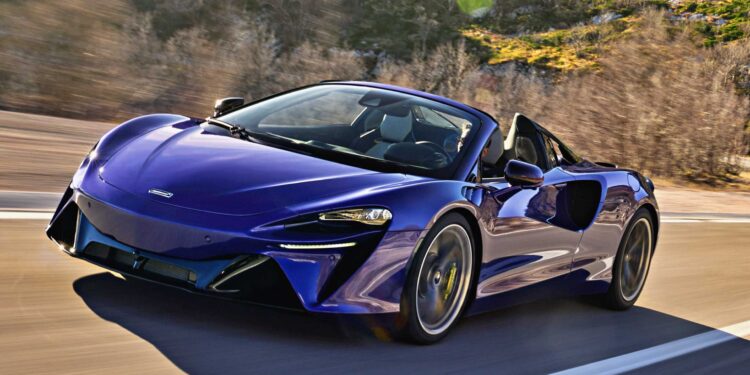
Image Source: McLaren Automotive
“Twenty, twenty, TWENTY,” my mom screams, as I approach a 90-degree bend preceded by a 20 mph sign on a country road near her home in Bumpkinville, Wisconsin. I’m doing plenty in the McLaren Artura Spider, and slow to about 40 mph for the turn, which the car handles with ease.
“Are you trying to kill your mother?” she asks.
“No, mom, that would kill me too,” I reply. “This car has a lot of capability.”
That’s the engaging supercar side of the Artura Spider’s multifaceted personality. As a plug-in hybrid, it can also be an electric economy car or an everyday driver.
The Artura is McLaren’s entry-level supercar, and the Spider fills the droptop role. It features a power-operated hardtop that opens or closes in just 11 seconds at speeds up to 30 mph. Carbon-composite construction means the top adds just 136 pounds versus the coupe.
Electric Economy Car
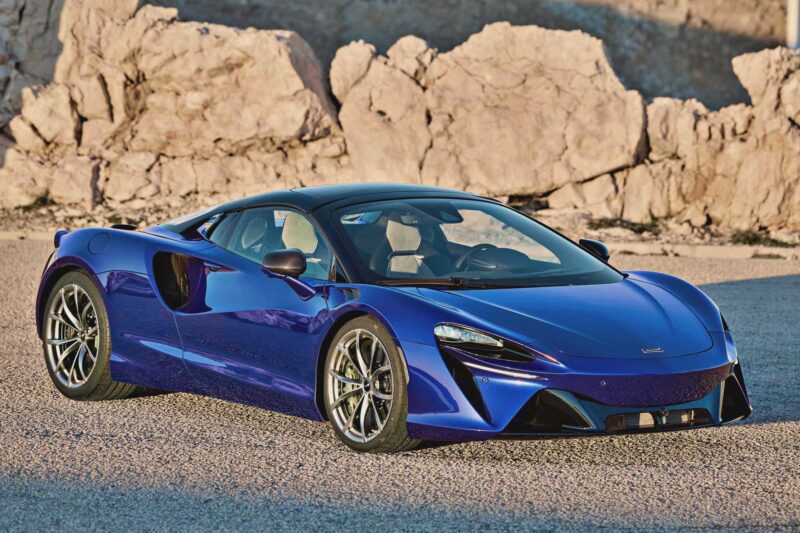
McLaren also limits the weight added by its plug-in hybrid powertrain, which consists of an axial-flux motor in the eight-speed dual-clutch automatic transmission, a twin-turbocharged V6, and a 7.4-kWh battery. The hybrid system adds just 287 pounds, which keeps the curb weight down to a reasonable 3,439 pounds.
The V6’s 120-degree V makes it spread wider and sit lower than the typical 60-degree V6s in mainstream cars. A dry sump oiling system lets it sit even lower, and the 94 horsepower and 117 pound-feet of the electric motor contribute to a total system output of 690 horsepower and 531 pound-feet of torque.
Start the Artura and it defaults to the Electric mode, which can be used up to 81 mph and effectively gives this sleek supercar silent propulsion and the power of a Smart ForTwo. The small battery enables a modest 11 miles of electric range, so Electric mode is best used to save fuel in heavy traffic or when driving in emissions-free city zones.
Everyday driver
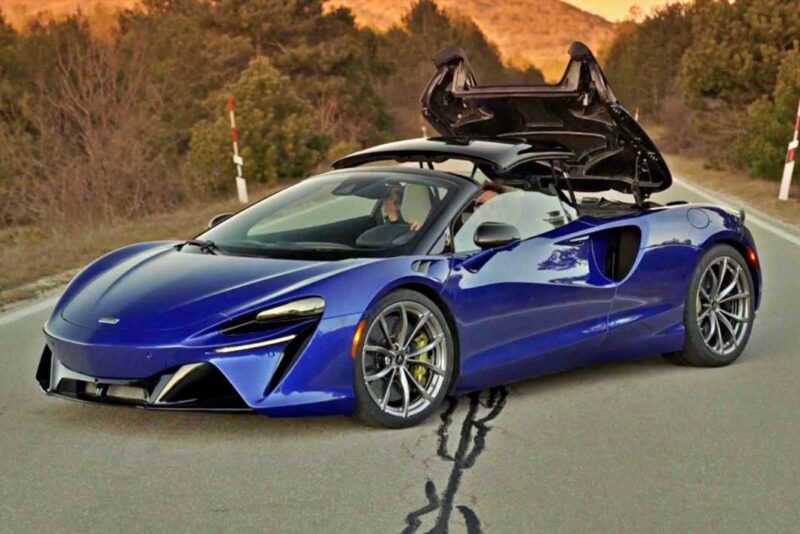
Click the powertrain controller on the right side of the instrument panel to Comfort and do the same for the suspension on the left side of the IP, and the Artura Spider becomes a comfortable everyday driver.
The car can run on electricity in Comfort mode, but step hard on the throttle and the V6 fires up with a pleasing “whum.” In Comfort, the exhaust note doesn’t drown out conversation, and the transmission and engine are relaxed. A deep stab of the throttle will unleash all 690 horses, but it’s just as happy to chill. Comfort also maintains a five-percent charge in the battery, which is important because reverse gear only runs on electricity.
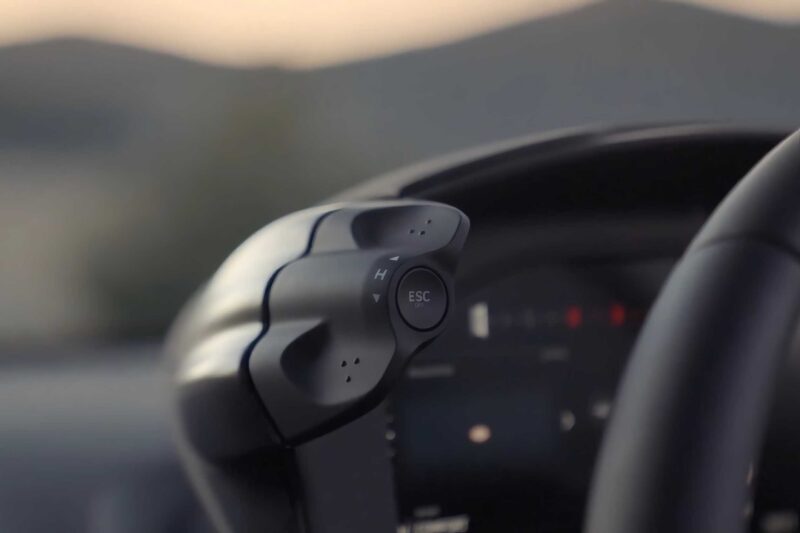
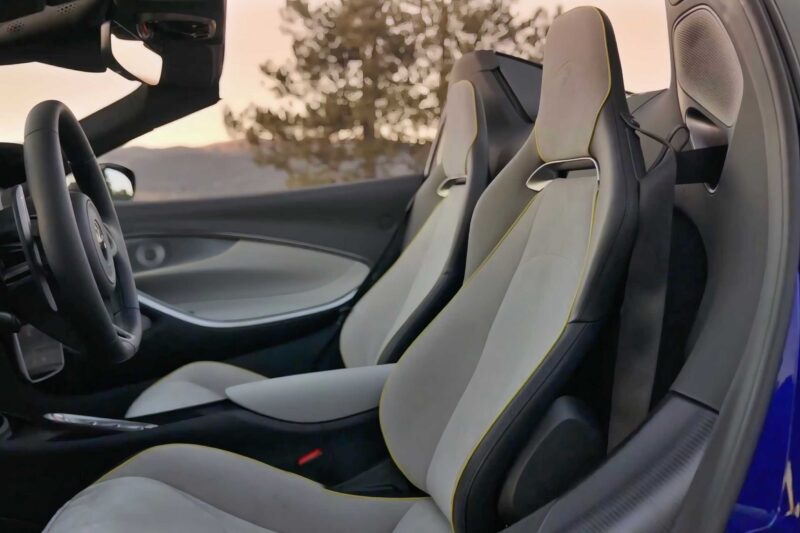
The Artura Spider is made from pretty exotic stuff. It’s built around a new mid-engine carbon-fiber tub called the McLaren Carbon Lightweight Architecture (MCLA), and it’s set on sticky 235/35R19 front and 295/35R20 rear Pirelli P Zero Corsa tires. That’s all aimed at performance, but the Artura manages to ride well enough to make it comfortable for regular duty. In their softest setting, the adaptive dampers absorb most bumps like a sport sedan.
City and highway driving give me time to check out the interior. My test car is equipped with the heated, power-adjustable comfort seats that have big bolsters to keep me situated in the corners but leave room for wider backsides. The $9,400 Performance Spec includes high-quality Alcantara upholstery with orange piping, and a $1,600 black package adds gloss-black plastic trim.
Engaging supercar
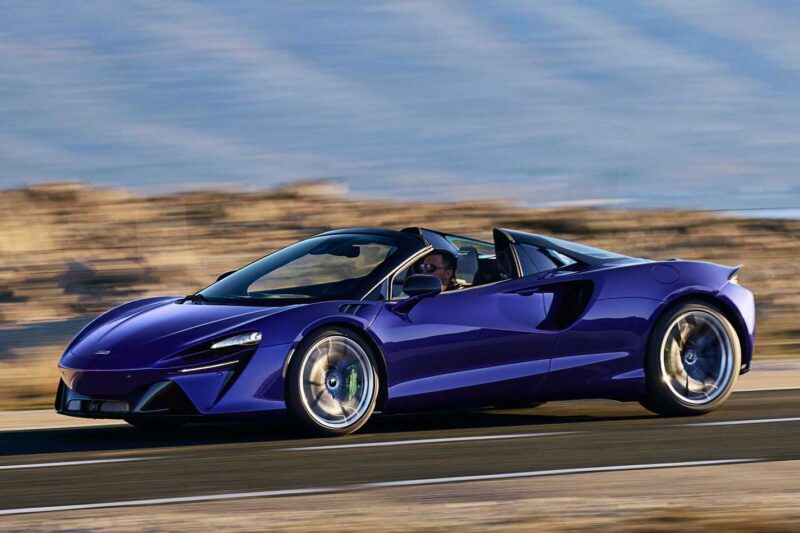
The Mr. Hyde side of the Artura’s multiple personalities is accessed through the Sport and especially the Track settings for both the suspension and powertrain.
My tester has the $5,100 sport exhaust system, which adds active exhaust valves and a symposer to pipe the exhaust note into the cabin. Sport mode opens the valves and activates the symposer, turning up the exhaust note’s volume so it becomes the entertainment rather than what’s playing on the radio. Track mode makes it even louder, which is great when dicing up the corners, but fatiguing when it drones on at highway speeds.
Sport and Track also unlock the powertrain’s supercar rambunctiousness. The throttle gets touchier, and the transmission hangs on to gears longer.
Despite the torque fill of the electric motor, there is a touch of turbo lag from a stop, but after that, power delivery gets intense. I open it up on a country road and the Artura pins me back into my seat. The transmission fires through shifts as the V6 approaches its 8,500-rpm redline with a raspy crescendo. The 0-60 mph run takes just 3.0 seconds, extra-legal speeds arrive all too quickly, and the Artura Spider tops out at 205 mph.
Sport mode keeps the battery at about a 45-percent charge, while Track overrevs the engine to charge the battery. On a 45-mile cruise back home, Track mode charges the battery from 20 to 80 percent, though I could also charge it from 0-80 percent in 2.5 hours on a 240-volt home outlet.
Sport and Track modes also firm up the dampers to make the ride busy on broken pavement and harsh over sharp bumps. The track is so firm that I wouldn’t recommend using it on anything but smooth pavement. On a twisty but patchwork country road, I put the suspension in Comfort to keep the tires on the pavement as much as possible.
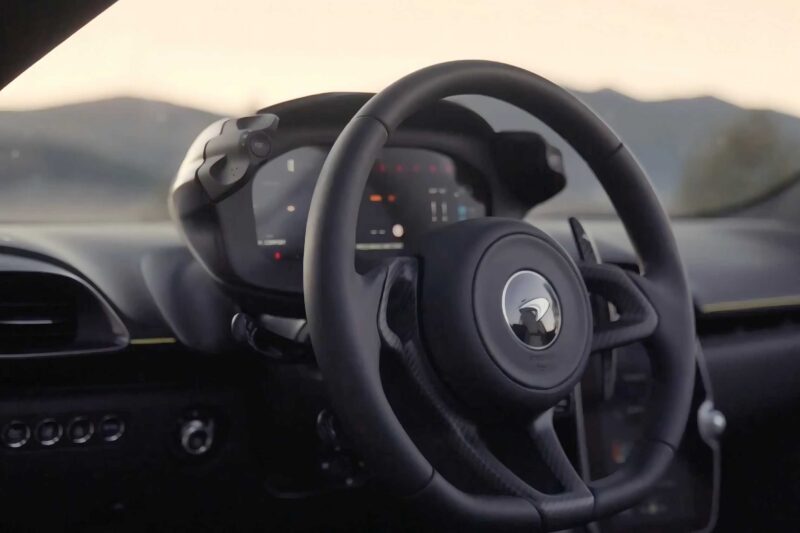
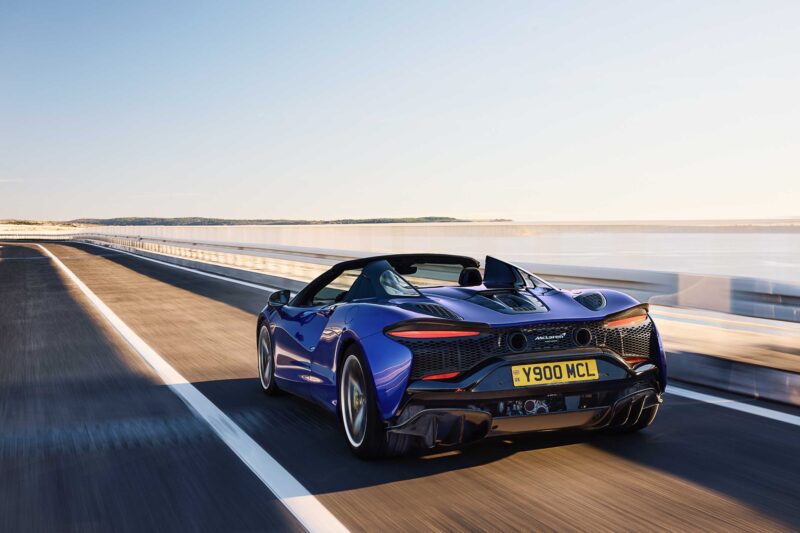
The low-slung Artura leans slightly in corners, which translates as feel from my perspective. It feels hunkered down and stable mid-corner, where I can control oversteer or understeer by adding or subtracting throttle. I don’t get the chance to drive the Artura Spider on a track, but track time in the Artura coupe revealed that the Pirellis have unrelenting grip, the car rotates willingly, and the standard carbon-ceramic brakes are strong but have a wooden feel after initial bite. In that extreme circumstance, the transmission didn’t always downshift to the right gear for the best power out of corners. I found I could do better with the large carbon-fiber shift paddles.
The Artura’s best dynamic trait is its electro-hydraulic steering. It’s pleasingly quick and direct with good weight, and road feel is plentiful through the small-diameter, flat-bottom steering wheel. The car reacts to steering inputs with scatback agility, too.
The 2025 McLaren Artura Spider starts at $281,008, including a hefty $5,000 delivery charge and a $2,208 fee for a few take-home goodies in the America’s Accessory Pack. That’s $24,700more than the coupe, and McLaren is happy to sell you as many expensive options as you like. With a smattering of options, my test car carries a substantial $332,348 price tag.
That’s obviously a lot of money to spend on a car, but McLaren Artura Spider can be seen as three cars in one. It’s quiet and efficient for short bursts as an electric economy car and comfortable as a daily driver, but it’s the most fun as an engaging supercar that can scare the hell out of your mom!
View All McLaren Arturas For Sale
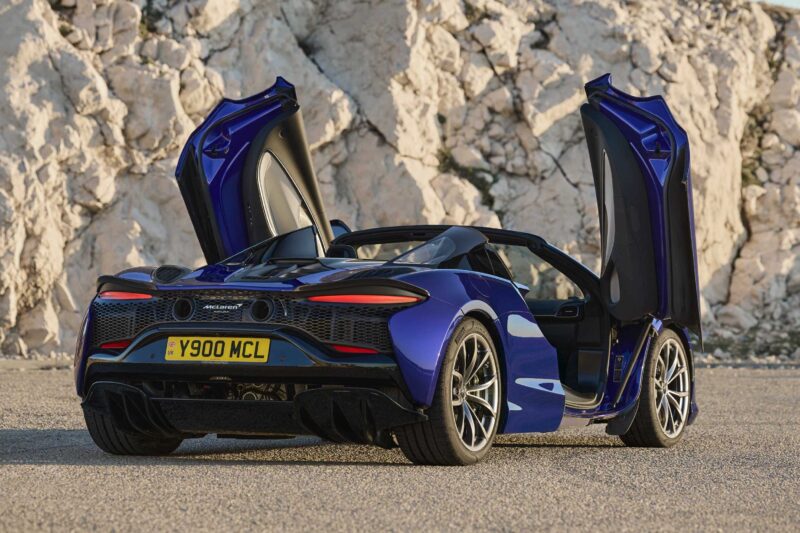
Source: McLaren
Tags: Featured
Related Articles
Review: 2025 Lincoln Navigator L Black Label Coddles Like A Spa On Wheels
by Kirk Bell
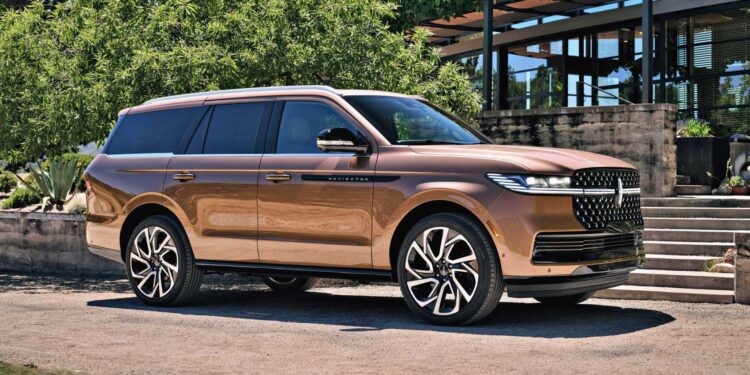
For as much as it can do while on the move, it’s what the 2025 Lincoln Navigator does while standing still that sets it apart. Lincoln wants you to think of the new Navigator as a spa on wheels and a third space where you can feel at ease.
The Lincoln Rejuvenate feature that’s calming me with the green glow of charged particles from the sun hitting the Earth’s magnetic field is only available when in Park. It’s one of three programs that come standard in every Navigator. The others are Waterfall Meditation with guided voice prompts and The Elements, which cycles through displays featuring water, air, earth, and fire. The system can also turn on the seat heaters/coolers, adjust the lighting and temperature, and play soothing sounds through the audio system. The Navigator isn’t the first vehicle with this type of system. Mercedes has offered a similar system for years in the S-Class and other high-end models. But this is the first application of this type of system in a Lincoln, and the Navigator is the only vehicle in its class with it.
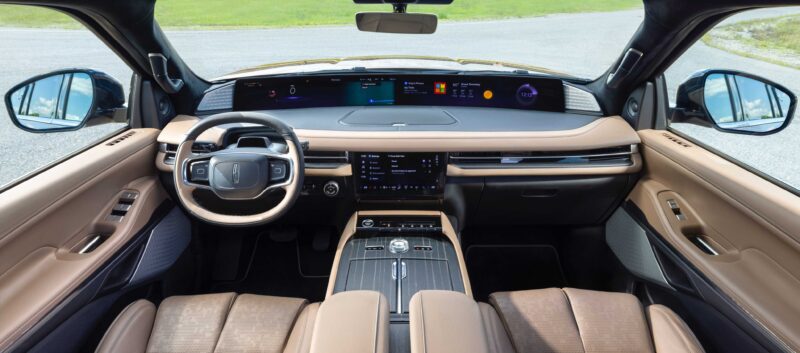
The Navigator offers much more than Rejuvenate to keep occupants comfortable and help them relax, whether at a stop or on the go, especially the top Black Label model I’m driving. It comes standard with a 30-way power-adjustable driver’s seat (a mere 28 ways for the front passenger), heated and ventilated second-row seats, heated third-row seats, a heated steering wheel, power-adjustable pedals, a Revel 28-speaker audio system, a rear-seat entertainment system, power running boards, and three-zone automatic climate control.
The technology stands out even more than the luxury. That 48-inch screen that sits at the base of the windshield serves not only as the digital instrument cluster but also provides a second display for the navigation system. It has three more programmable display areas that can show the trip computer, a towing trip computer, the weather, a compass, the fuel economy, or the media that’s being played.
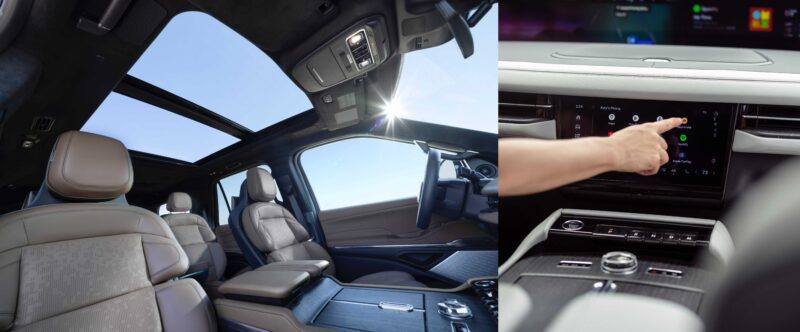
Lincoln also provides an 11.1-inch touchscreen on the lower portion of the dash. It controls what appears on the big screen as well as the normal infotainment functions. Leaving space to view the 48-inch screen required moving the steering wheel out of the way by giving it a small diameter and a flat top and bottom. Rather than looking at the instrument cluster through the steering wheel, drivers see it over the wheel. It’s a somewhat odd layout, but it works, though I prefer a more traditional layout.
The steering wheel is also home to a pair of five-way controllers. The right one handles the power controls for the steering column, mirrors, and pedals, while the left one activates the standard Blue Cruise. One of today’s better highway driver-assist system systems, Blue Cruise allows for miles of hands-free driving, but I’ve had trouble with it deactivating due to glare off my glasses when the sun lies ahead.
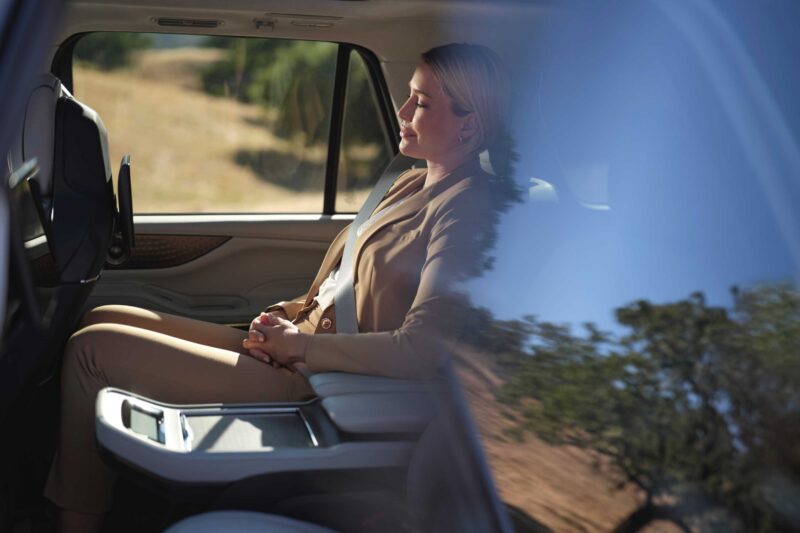
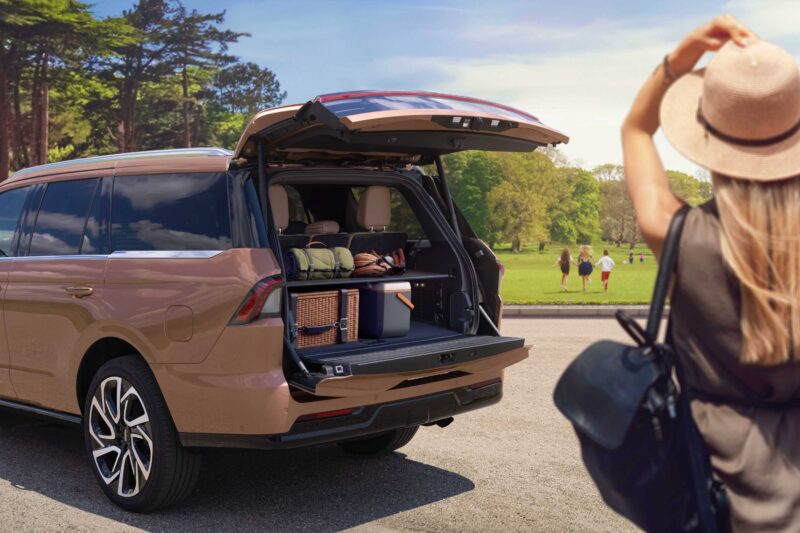
Space remains one of the Navigator’s greatest strengths, especially in the L body style that is a foot longer. It seats seven in comfort. The second-row features captain’s chairs and a small screen to control the temperature, massage function, seat heating and cooling, audio, and lighting. The seats power recline and tilt forward to allow access to one of the best third rows on the market. The power-folding third row drops down to increase cargo space from 36.1 to 75.4 cubic feet, which is accessed by a new split tailgate. That expands to a massive 121.6 cubic feet with the second and third rows down, which is only bested by vans.
This cabin is wrapped in high-quality, purposefully chosen materials. Buyers don’t simply pick a leather color and trim materials. Rather, they choose from three Black Label themes. My tester comes outfitted with the Atmospheric theme, which features Salt Crystal Gray leather with Adobe stitching and a diamond seat pattern, a Salt Crystal Gray synthetic suede headliner, black synthetic suede carpets and floor mats, dark wood interior trim, and aluminum wheels highlighted with Radiant Copper paint.
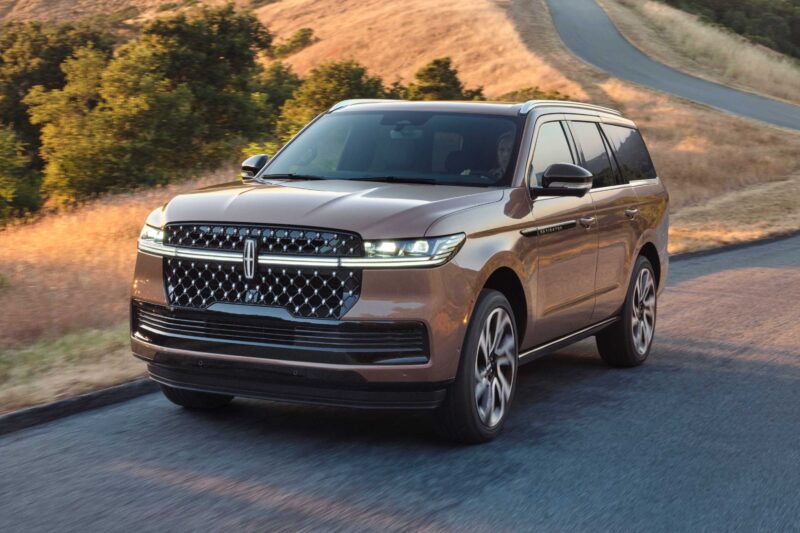
The Navigator remains a truck-like body-on-frame vehicle, and that format is at odds with the interior’s mission to coddle its occupants. This beast weighs in at 6,044 pounds and is engineered to tow up to 8,700 pounds (8,400 with my tester’s 24-inch wheels). The heavy components and sturdy frame give the Navigator a firm, borderline bouncy ride, though the standard adaptive dampers do a good job of quelling excess body quake.
Lincoln tunes the suspension for a firm, controlled ride. That means the body leans less in corners than it will in a Cadillac Escalade, but the ride isn’t as forgiving as the Caddy. Lincoln doesn’t offer advanced suspension components such as air springs or electronically controlled active anti-roll bars that could help the Navigator lean even less. At 231.9 inches long, the Navigator L is a monster on the road and cumbersome in parking lots. Rear-axle steering would be another smart addition to make it easier to park.
Drivers have a choice of seven drive modes that firm up the controls or soften them. No matter the mode, the steering has some welcome heft and is stable on center, and the powertrain always offers plenty of punch.
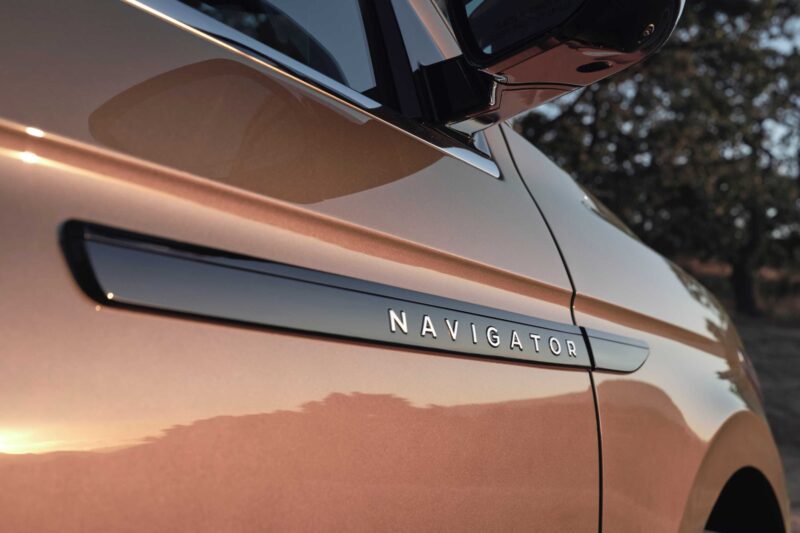
Under the hood lies a twin-turbocharged 3.5-liter V6 that supplies 440 horsepower and 510 pound-feet of torque. It sends its power to all four wheels through a 10-speed automatic transmission, and a two-speed transfer case comes with the standard heavy-duty towing package. The power arrives readily and with a prominent growl that’s unexpected and a little brash for a luxury vehicle. Some buyers may prefer a quieter engine. Of course, with all that power and weight, the Navigator L drinks gas like a sailor on shore leave. It’s EPA rated at 15 mpg city, 22 highway, 17 combined.
The 2025 Lincoln Navigator L Black Label starts at $121,485, including a $1,995 destination fee. For that money buyers get a roomy, powerful, and luxurious vehicle that can carry the family while towing the horse trailer or Airstream. Luxury brands offer more comfortable spas on wheels/relaxing third spaces, but none that offer as much capability as the Navigator L.
View All Lincoln Navigators For Sale
Images Source: Lincoln
Tags: Featured
Related Articles
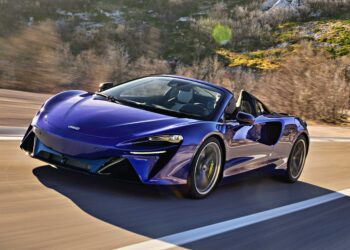
2025 McLaren Artura Spider Review: Droptop With A Split Personality
Track Review from Estoril: Lamborghini Temerario Might Just Outshine V12 Revuelto
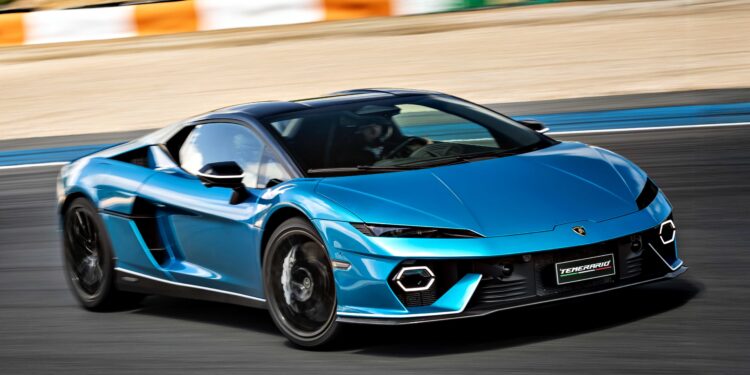
Last year during Monterey Car Week, Lamborghini unveiled the Huracán supercar’s highly anticipated successor, which will serve as the final step in a broader hybrid strategy that began with the flagship Revuelto and Urus SUV. Dubbed the Temerario, the new model earned immediate coverage largely thanks to the borderline unbelievable stats of that hybrid powertrain, highlighted by a twin-turbo V8 that can rev to 10,000 rpm. Alongside three electric motors borrowed from the Revuelto, combined output peaks at an absurd 907 horsepower.
Almost a year later, the time finally arrived for media to preview the Temerario in a dynamic launch program held at Estoril Circuit, the former F1 and MotoGP racetrack in Portugal. With a long front straight and several tricky, technical turns, Estoril served as the perfect place to show off the Temerario’s all-out power and engaging performance, plus some of the nifty drifting and launch control features that advanced all-wheel-drive hybrid tech make possible.
Setting a New Personal Top Speed Record

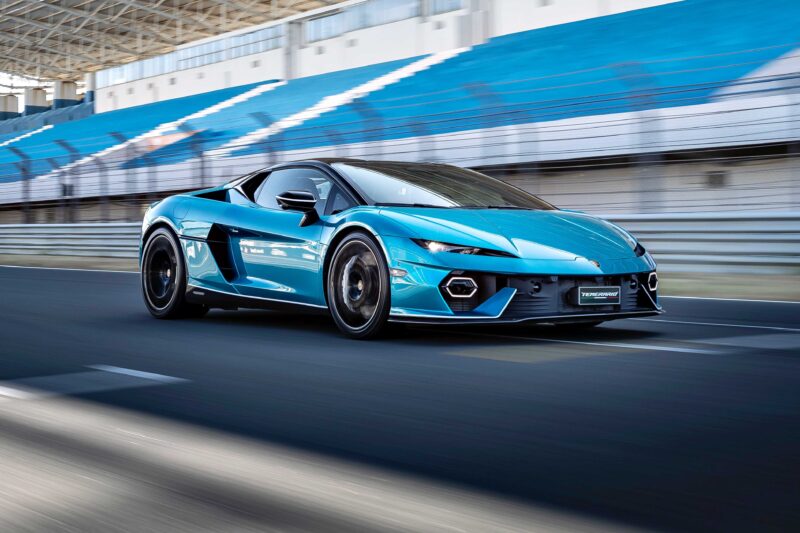
Even before climbing into a Temerario, as I slipped on a head scarf and helmet, echoes off the grandstand hinted at the fun ahead. EU emissions regulations dictate the use of gasoline particulate filters, so the V8 unfortunately lacks the high-end thrill of a Huracán V10 or a Revuelto V12, but the sheer pace as the previous drive group whipped by still sounded unmistakable.
Soon enough, I found out myself, after a first sighting lap that I spent warming up the tires and acclimating to the track layout. By the time I let loose onto the front straight, full EV and internal-combustion power working together in an understated concerto, I glanced down at the speedometer and spied 301 kph – or 187 mph, good enough to set a new personal record as my highest top speed ever and best the Corvette ZR1 that I took to 181 mph earlier this year.
And we were just getting started. The rest of that first stint revealed that I’d been babying the Temerario. No need to act timid here, instead Lambo’s latest and quite possibly greatest supercar appreciates a bit of intrepid helmsmanship, quick flicks of the light steering, and heavy doses of full-throttle acceleration. After just a few laps, I easily found and exceeded the limits of the Bridgestone Potenza Sport tires, the magic point where slip-and-slide actually allows for more speed and confidence beyond the edge of full traction.

I spent the rest of the day after that first stint in a Temerario equipped with the lightweight “Alleggerita” package, which adds Potenza Race tires as well as a host of carbon fiber to save pounds and a titanium muffler that further enhances the engine’s soundtrack. The Alleggerita package dictated slight modifications to the Temerario’s suspension tuning to handle the additional cornering load, too. But the tires alone unlocked a whole new level of performance, with more feedback and grip that improved the steering feedback, clamped down the braking, and accentuated all-out grip while blasting back out of corners.
So much so, that once I found a rhythm, the speedo eventually topped out at 308 kph – not too far off the top speed of 340 kph. And I left a fair amount on the table, too, because my lead-follow instructor, senior attributes and performance developer Mario Fasanetto, had me braking early at the end of the front straight in the name of safety. I figure that holding off and trusting the Temerario more into Turn 1, I might have easily hit 315 kph.
Slipping and Sliding Around Estoril’s F1 track
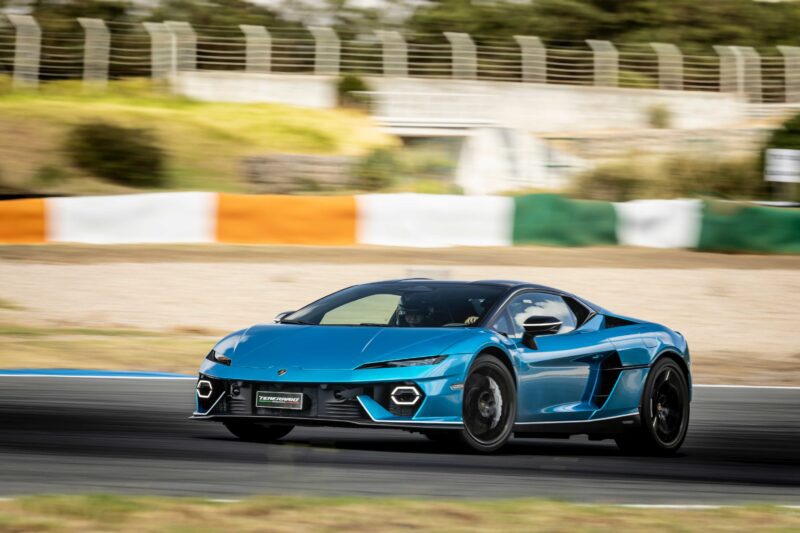
Later in the day, Fasanetto hopped into the passenger seat to coach me through a few tries at the Temerario’s drift mode. Turning on drift mode requires simply pushing a button on the steering wheel, then spinning a dial to select one of three levels: Level 1 targets 15 degrees of drift angle, Level 2 allows for 30 degrees, and Level 3 maxes out at 40 degrees.
In each mode, the Temerario’s advanced traction control computations prioritize front-wheel torque vectoring by the dual electric motors to help enable and extend slides. I started out in Level 2, and lit up the rear tires easily by initiating a quick hit of steering and throttle simultaneously. But I struggled to finish the drift smoothly after a second or so spent sideways, and even spun out on my next attempt.
Surprisingly, stepping up to Level 3 actually made the process easier, with more predictable throttle response and greater stability over the nose. Or maybe practice makes perfect, but by the last couple of runs, Fasenetto started cheering and might have even exclaimed “Like a pro!”
Next, we cruised back over to the start of Estoril’s front straight to give launch control a go. Again, I pushed a little button on the steering wheel – this time on the left of the Lambo badge – to activate the new mode. Then, I braked with my left foot and pushed the accelerator pedal to the floor for two seconds to let the V8’s 70-millimeter turbos build boost, until I just stepped off the brake. All four tires only chirped for a millisecond before leaping forward, as the Temerario managed to deliver the kind of neck-snapping acceleration typically limited to only today’s era of highest-performance EVs.
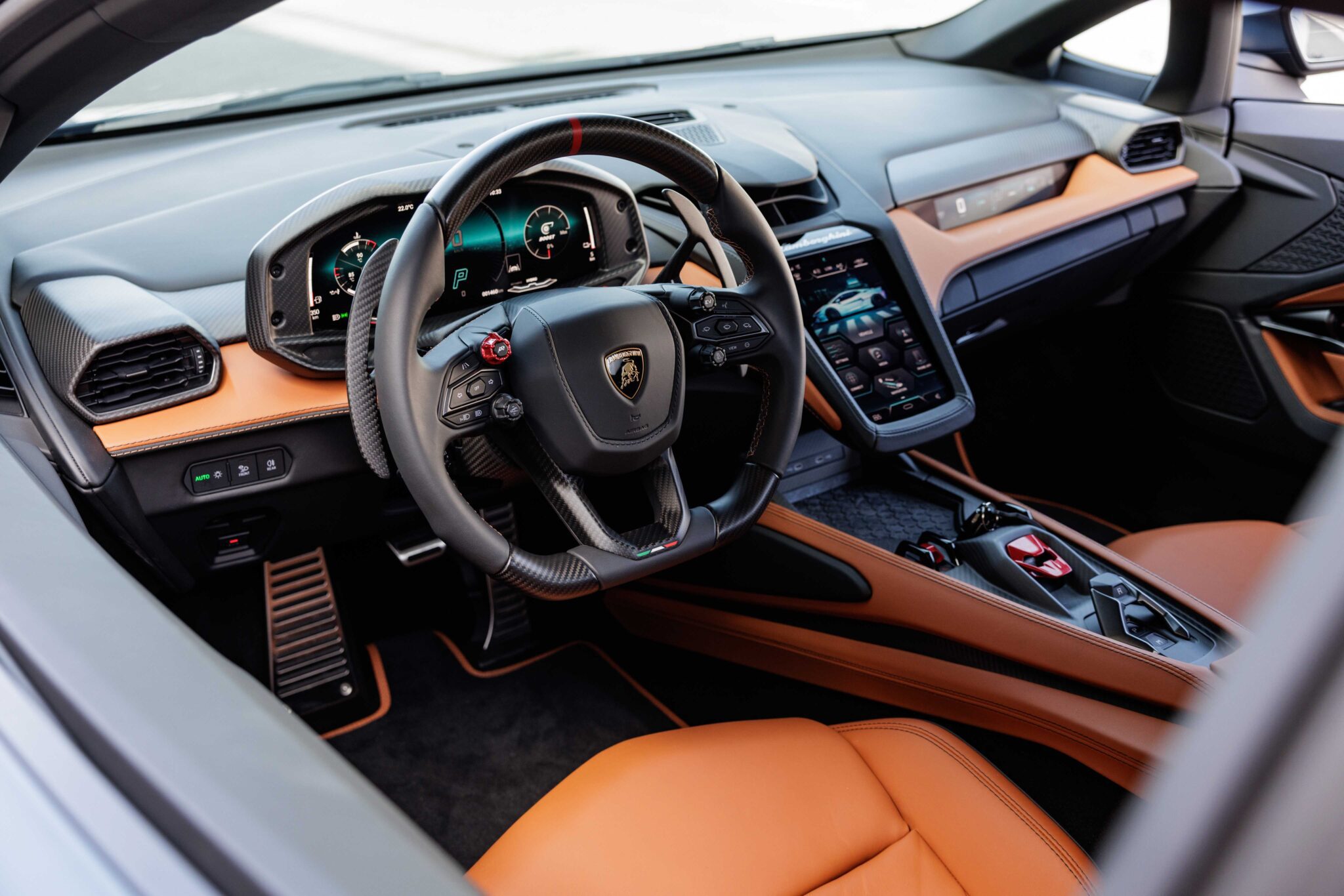
1 of 7

Though the day at Estoril proved beyond a reasonable doubt the performance benefits of arguably the world’s greatest V8 engine working alongside the triple e-motor setup, all the Temerario’s modern tech also improves daily driveability, as well. Push the start-stop button, still under the red jet fighter cover, and the powertrain wakes up automatically into all-electric Citta mode. Though the centrally located battery pack only holds 3.8 kWh of electrons, the Temerario can cruise along for approximately six miles in silence.
Want softer dampers for a long highway journey? No problem, change the drive mode. And Lambo will even sell more comfortable seats with ventilation too.Most importantly, accessing every mode from Citta quiet to full drifting fun never gets confusing thanks to a simplified user interface and plenty of physical switchgear.
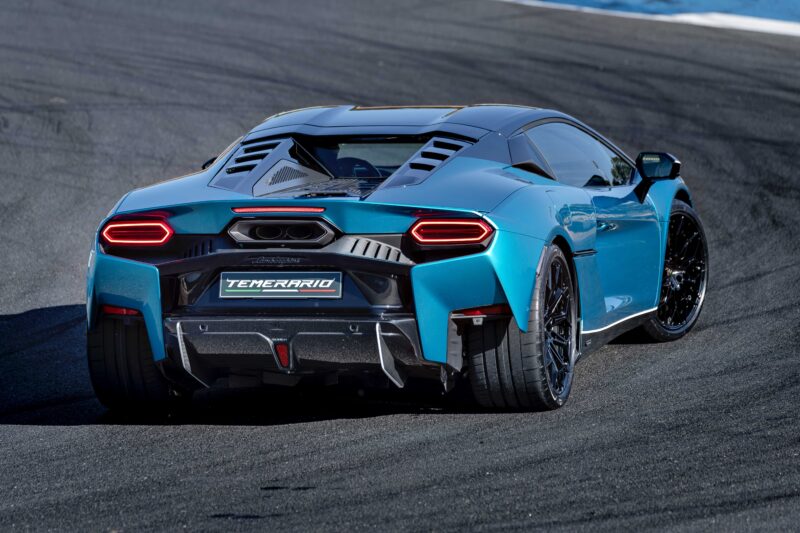
Unlike, for example, another incredible Italian hybrid, the Ferrari 296 GTB – that can easily border on frustrating due to incomprehensible haptic buttons and the lack of a center touchscreen. The 296 GTB delivers similar hybrid punch, but lacks the almost limitless revving of the Temerario. And even if the sublime steering slices perfectly through any corner, the Ferrari also lacks some of the hooligan fun of Lambo’s all-wheel-drive drifter. A McLaren 750S similarly sticks with RWD only and definitely benefits from McLaren’s quintessential priority on weight savings. But the Temerario’s powertrain takes the cake, while contributing to a bit more daily-driver confidence, as well.
From a design perspective, this latest Lambo continues a trend toward classier styling that allows for more apt comparisons to Ferraris and McLarens, not to mention pricing that will likely take abig step up from the Huracán, too. But I also spent plenty of time at Estoril contrasting the Temerario with the 1,064-hp Corvette ZR1 that I drove earlier this year, which proved that four-figure horsepower stats don’t need to cost seven figures.
Lamborghini Temerario Conclusions
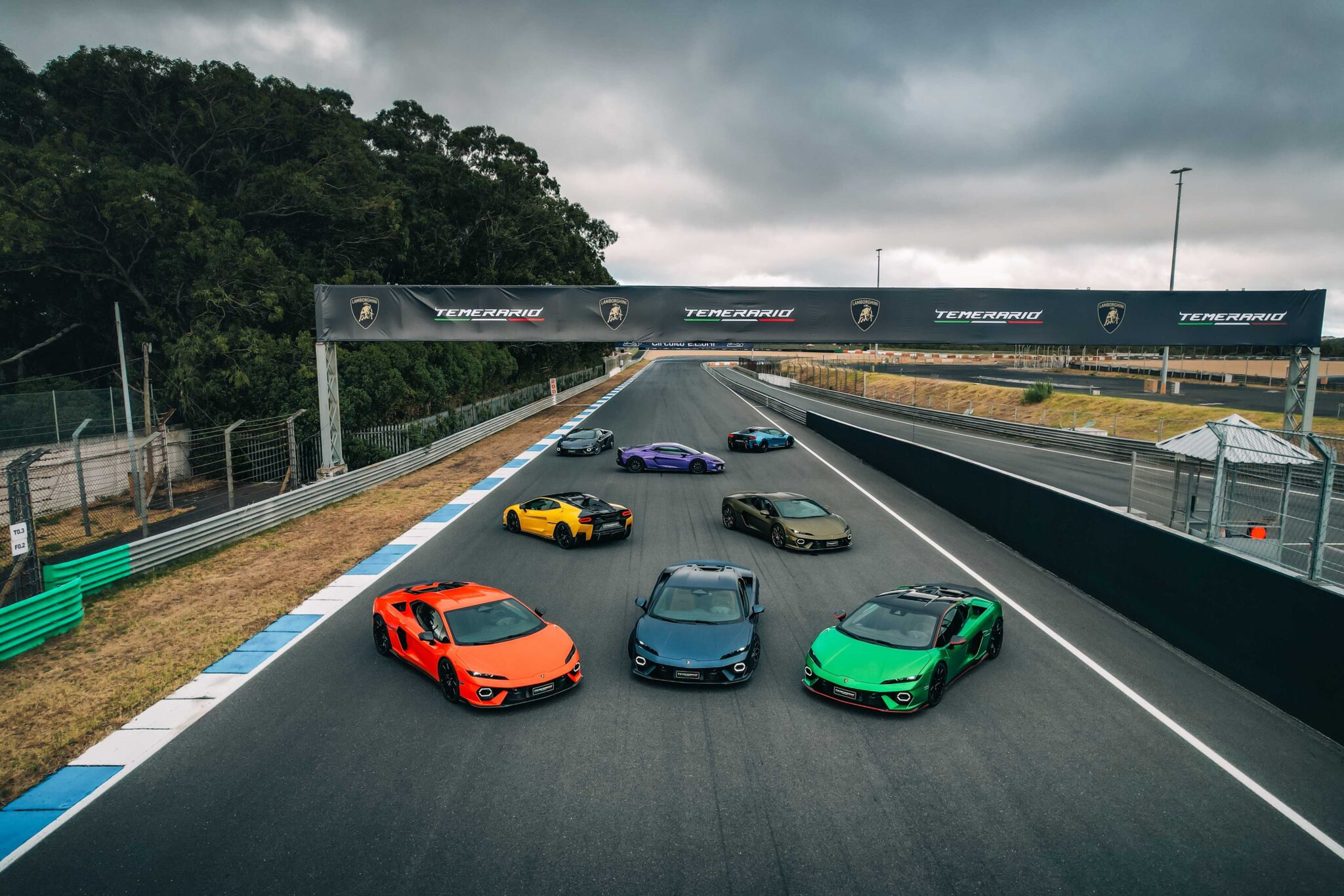
1 of 7

The Temerario’s Gallardo and Huracán lineage shines through, with plenty of cues taken from Revuelto, but the gut-punch of acceleration and track performance most closely resembles the ZR1 that I tested at COTA this past spring. Don’t even ask about Corvette design versus Lambo, though…
And keep in mind, this is just the first Temerario variant. Lambo’s reps on hand stayed mum on potential Evo or STO track specials, much less a Sterrato off-roader. The Temerario starts at $382,654, with the Alleggerita package costing $49,113. Ticking that box improves upon my main two critiques for the car, the lighter steering and underwhelming exhaust note with the base muffler.
Regardless, when specced properly, the Temerario arrives as a stone-cold stunner, maybe the most enjoyable supercar ever to drive hard at the limit. Stupendous technological competence allows the Huracán’s successor to make everyone a better driver, myself included, all from behind the scenes. And might, just possibly, even outshine the V12 Revuelto in terms of true driving delight.
View All Lamborghinis For Sale
Tags: Featured
Related Articles

2025 McLaren Artura Spider Review: Droptop With A Split Personality
“Twenty, twenty, TWENTY,” my mom screams, as I approach a…
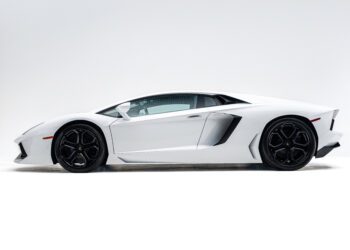
Lamborghini Donates The First North American Aventador To The Petersen Museum
The Petersen Museum has the beginning of an era that’s…
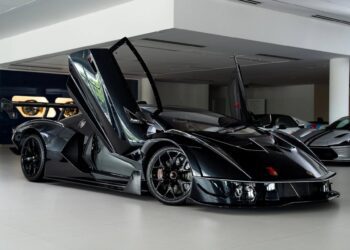
Hottest Lamborghinis For Sale: Own An Iconic Fighting Bull Supercar
It’s hard to go wrong with one of Italy’s greatest…
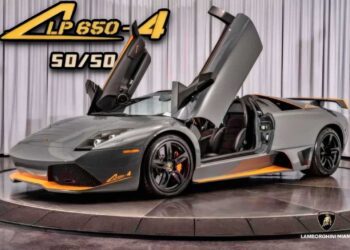
#50-of-50: LAST Lamborghini Murcielago LP 650-4 Roadster for Sale at Prestige Imports
M2308022 We Bought Dog Freedom for Watch His Miracle Journey part1 part2
Leave a Reply
Logged in as admin79. Edit your profile. Log out? Required fields are marked *
Comment *SearchSearch
Recent Posts
- M2308023 The rescue of the puppies who had been abandoned to die
- M2308022 We Bought Dog Freedom for Watch His Miracle Journey part1 part2
- M2308021 s Ferocious Angry NO you are wrong It can be fear or pain that the only way they can express Don give up we are humans we part2
- M2008026_This story will break your heart rescueanimals rescuedogs dog reelsvideoシ rescuedog puppies puppy rescue rescuedogsofins_part2
- M2308020 El amor que estos animales se tienen entre sí es incondicional whole
Recent Comments
No comments to show.
Archives
Categories
© 2025 JNews – Premium WordPress news & m



